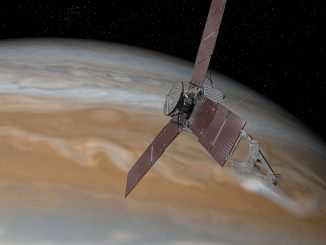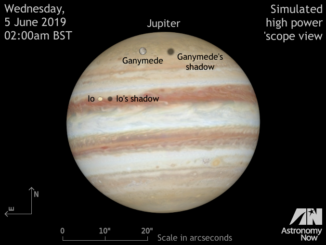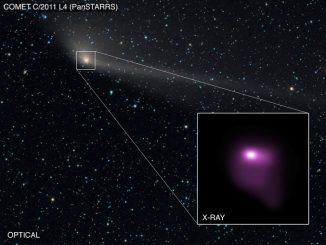Renowned UK astro-imager Damian Peach created this stunning video of a rotating Jupiter with images captured from Barbados in early to mid-June, three weeks before Juno’s arrival at the gas giant.
Related Articles

NASA’s Juno spacecraft closing in on Jupiter for 4 July orbit insertion
On 4 July, NASA will fly a solar-powered spacecraft the size of a basketball court within 2,900 miles of the cloud tops of our solar system’s largest planet, Jupiter. Over the past two weeks, several milestones occurred that were key to a successful 35-minute burn of its rocket motor, which will place the robotic explorer into a polar orbit around the gas giant.

Get ready for prime-time Jupiter and its multi-moon events in June 2019
Jupiter, the solar system’s largest planet, reaches opposition on 10 June in the constellation of Ophiuchus (the Serpent Bearer) and is visible low in the southern sky of the UK through the night. Observers with small to medium aperture telescopes can see a number of shadow transits of Jupiter’s Galilean moons and view the planet’s Great Red Spot throughout June.

Chandra sees comets in the “X”-treme
Scientists have determined that comets produce X-ray emission when particles in the solar wind strike the comet’s atmosphere. Recently, astronomers announced the results of a study using data collected with NASA’s Chandra X-ray Observatory of two comets — C/2012 S1 ISON and C/2011 S4 PanSTARRS — when both were relatively close to Earth.
